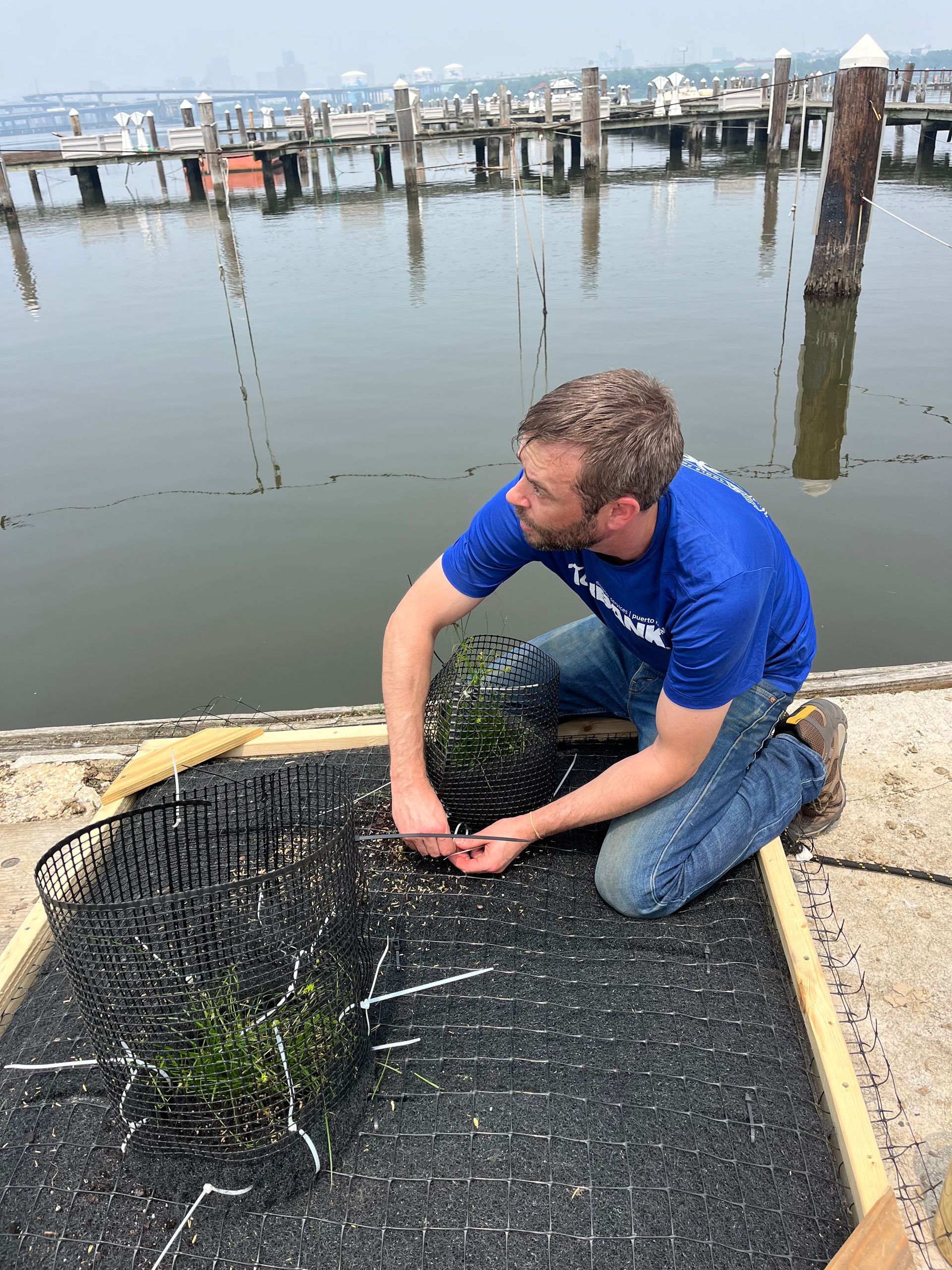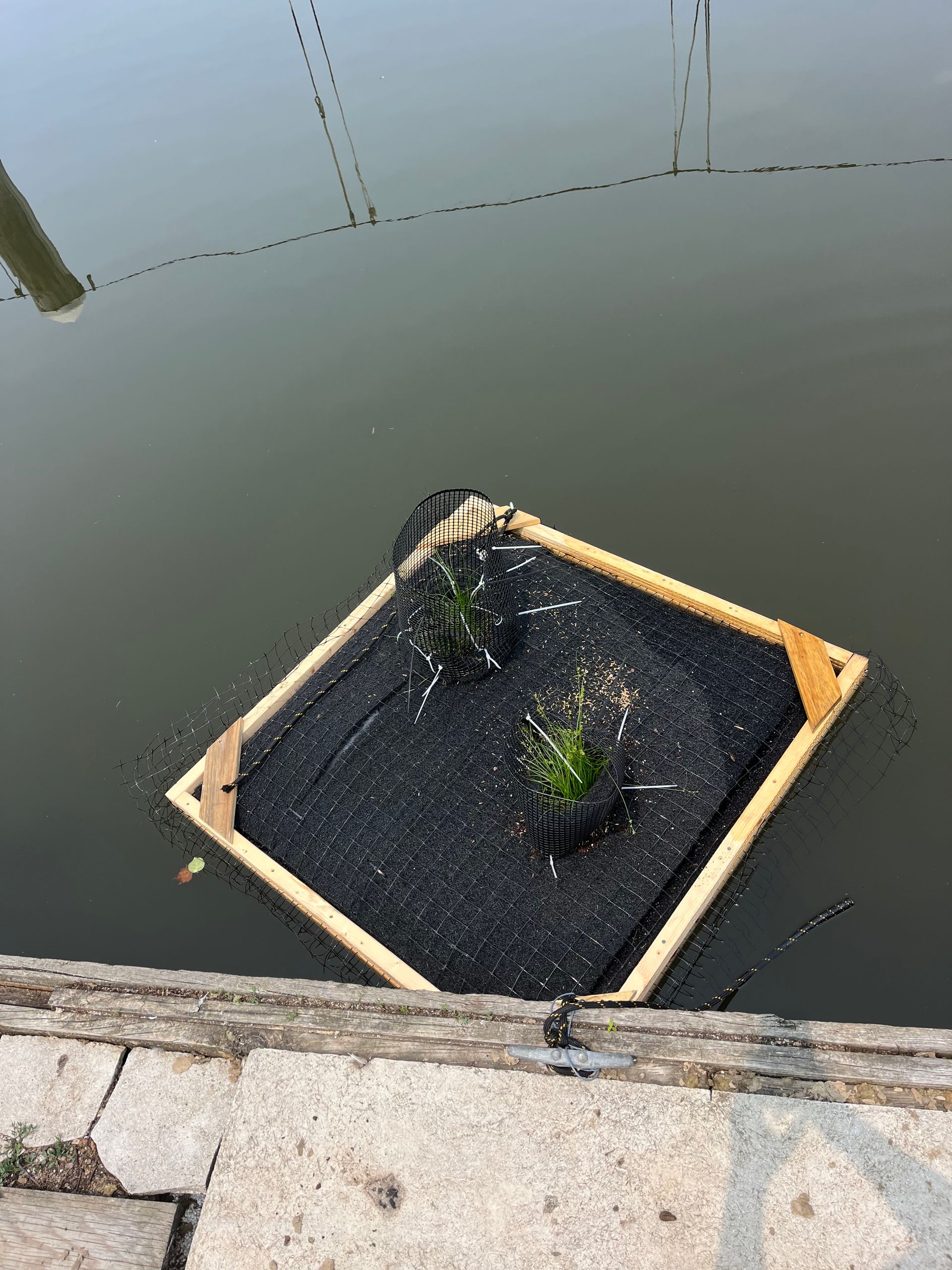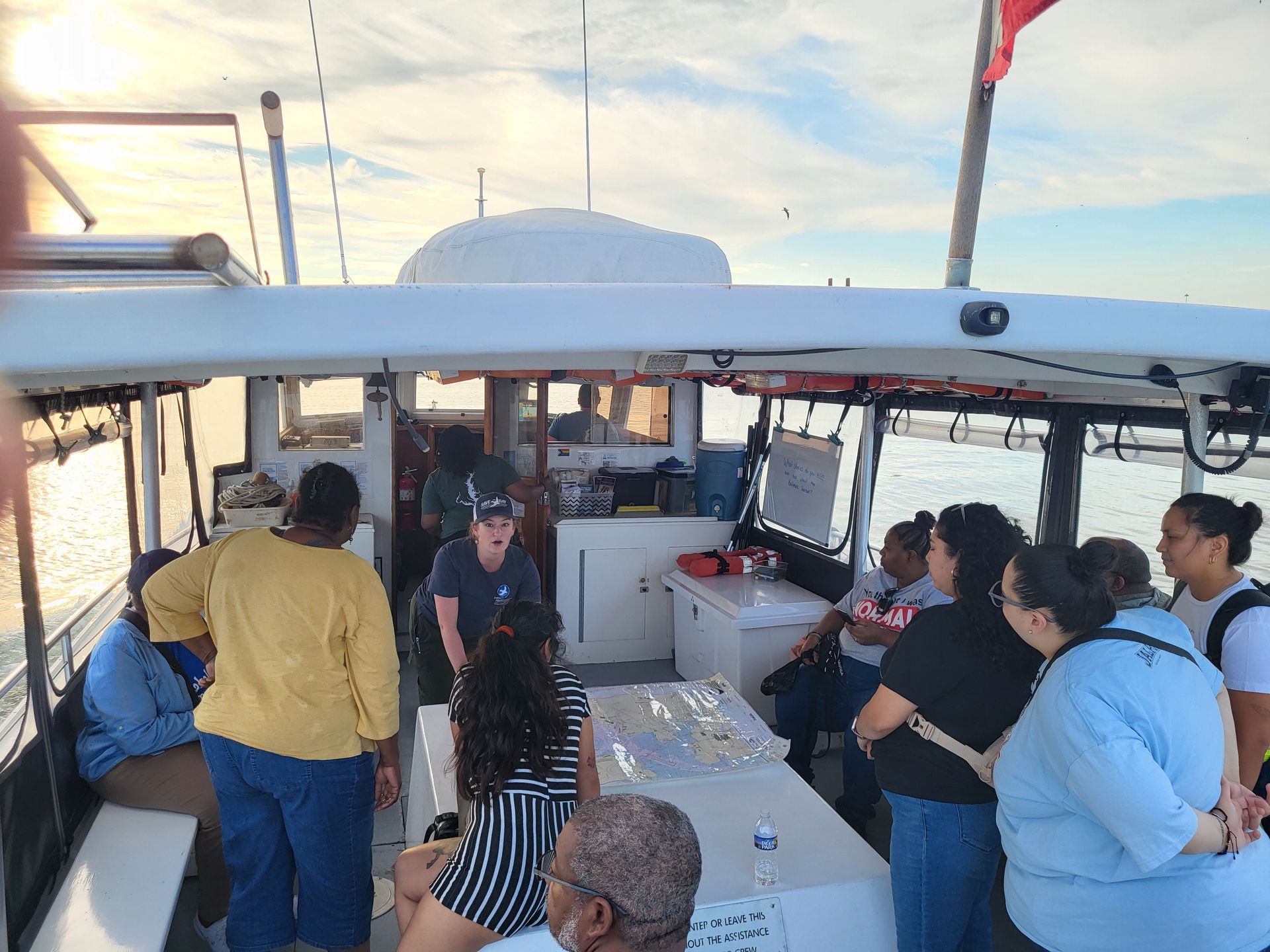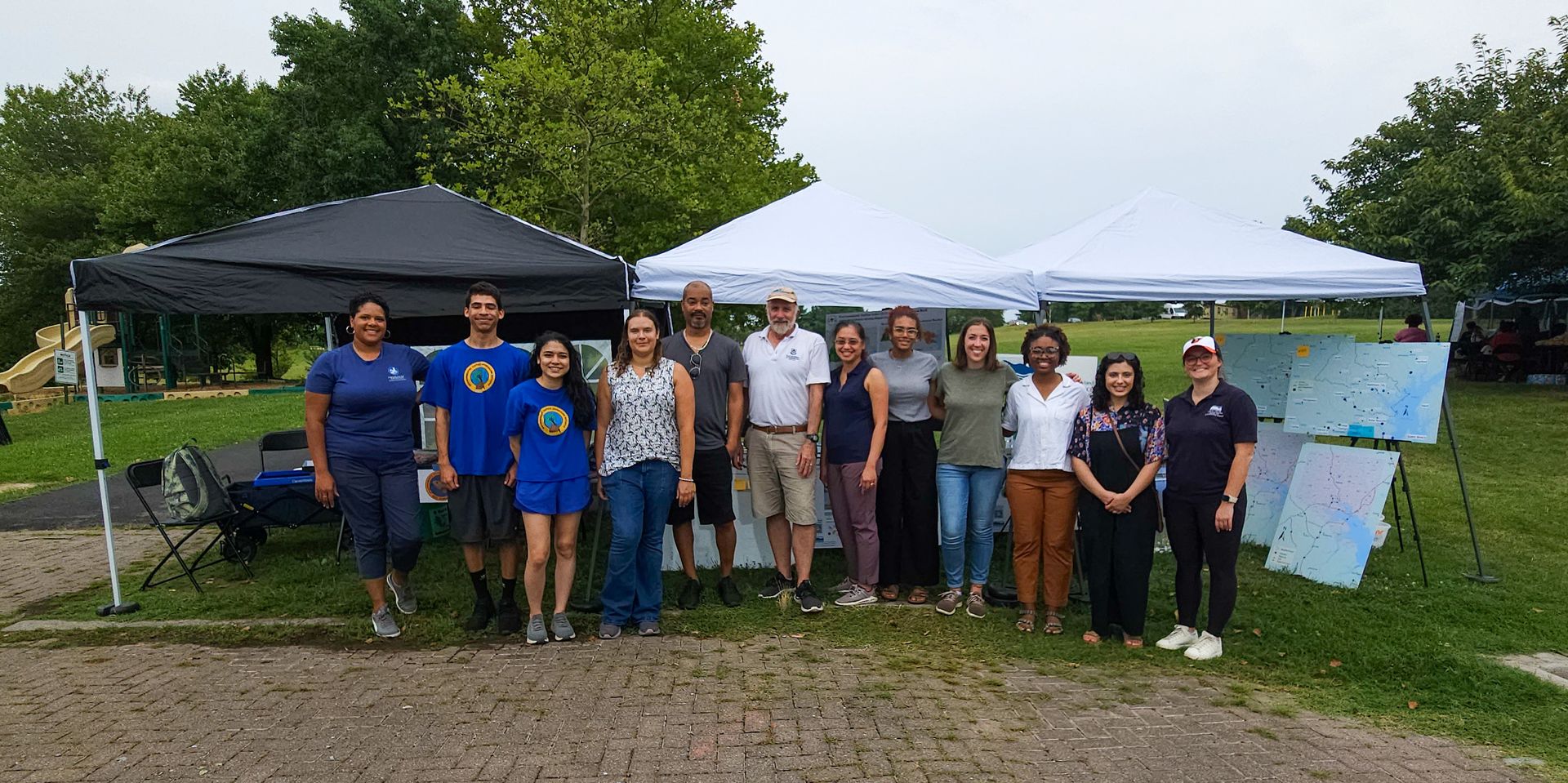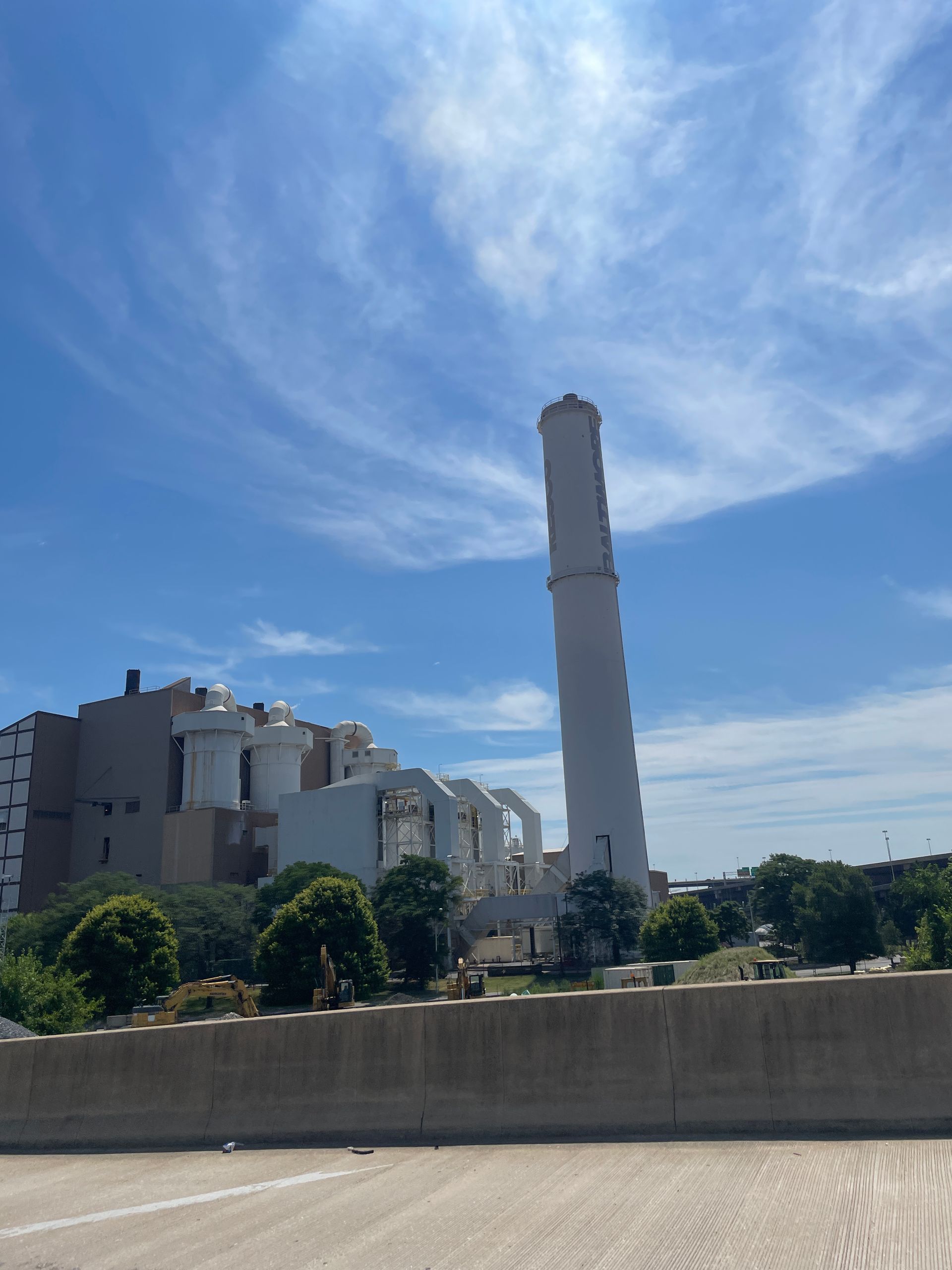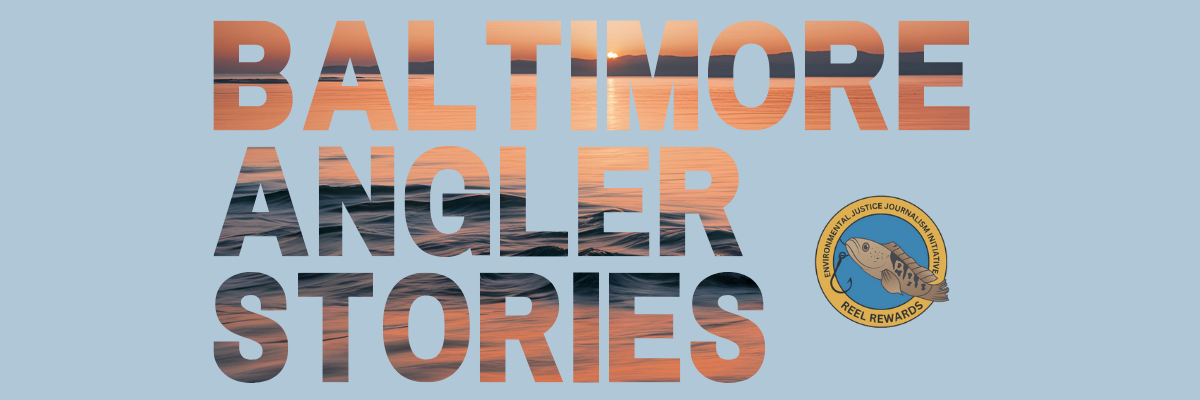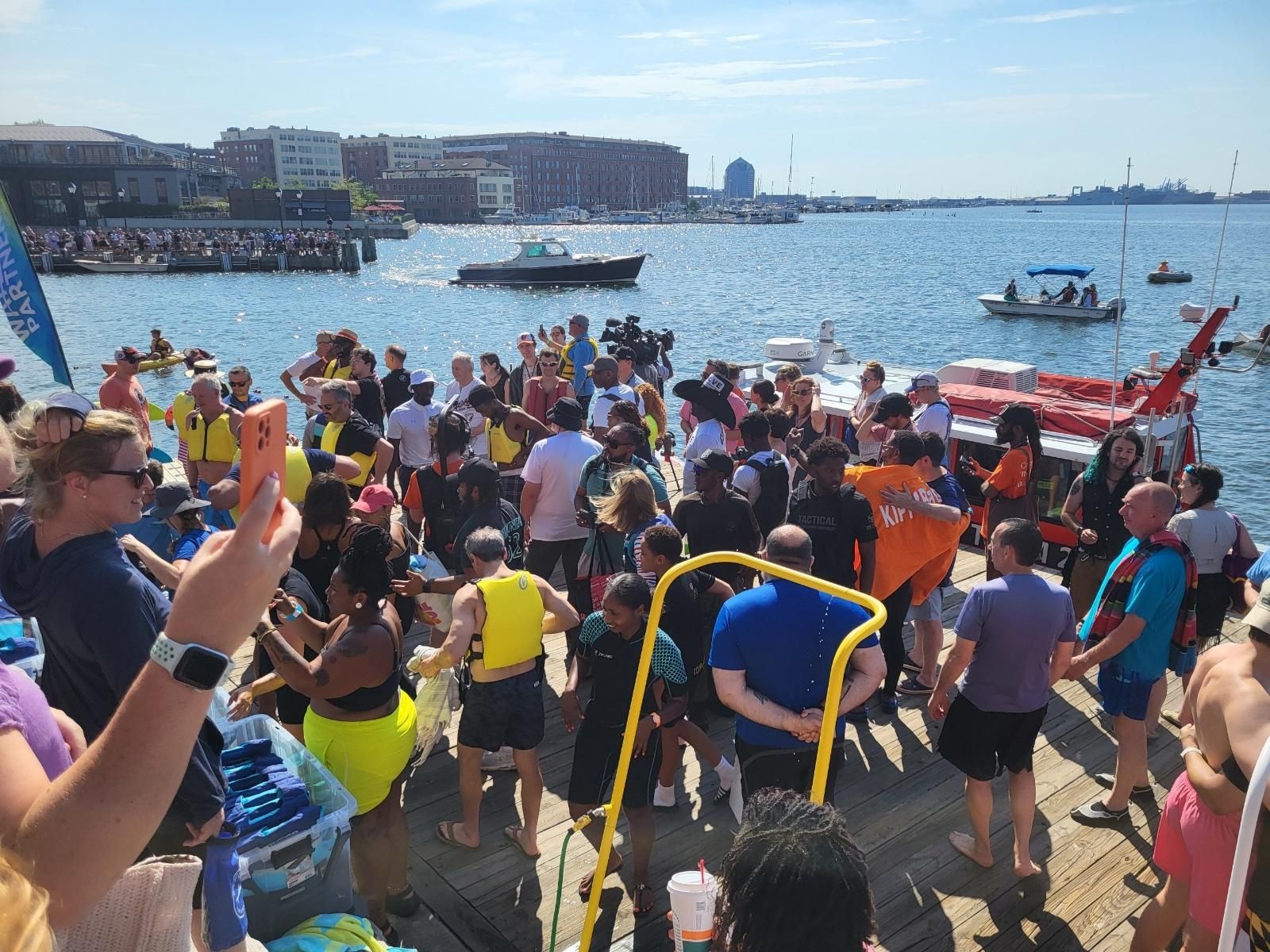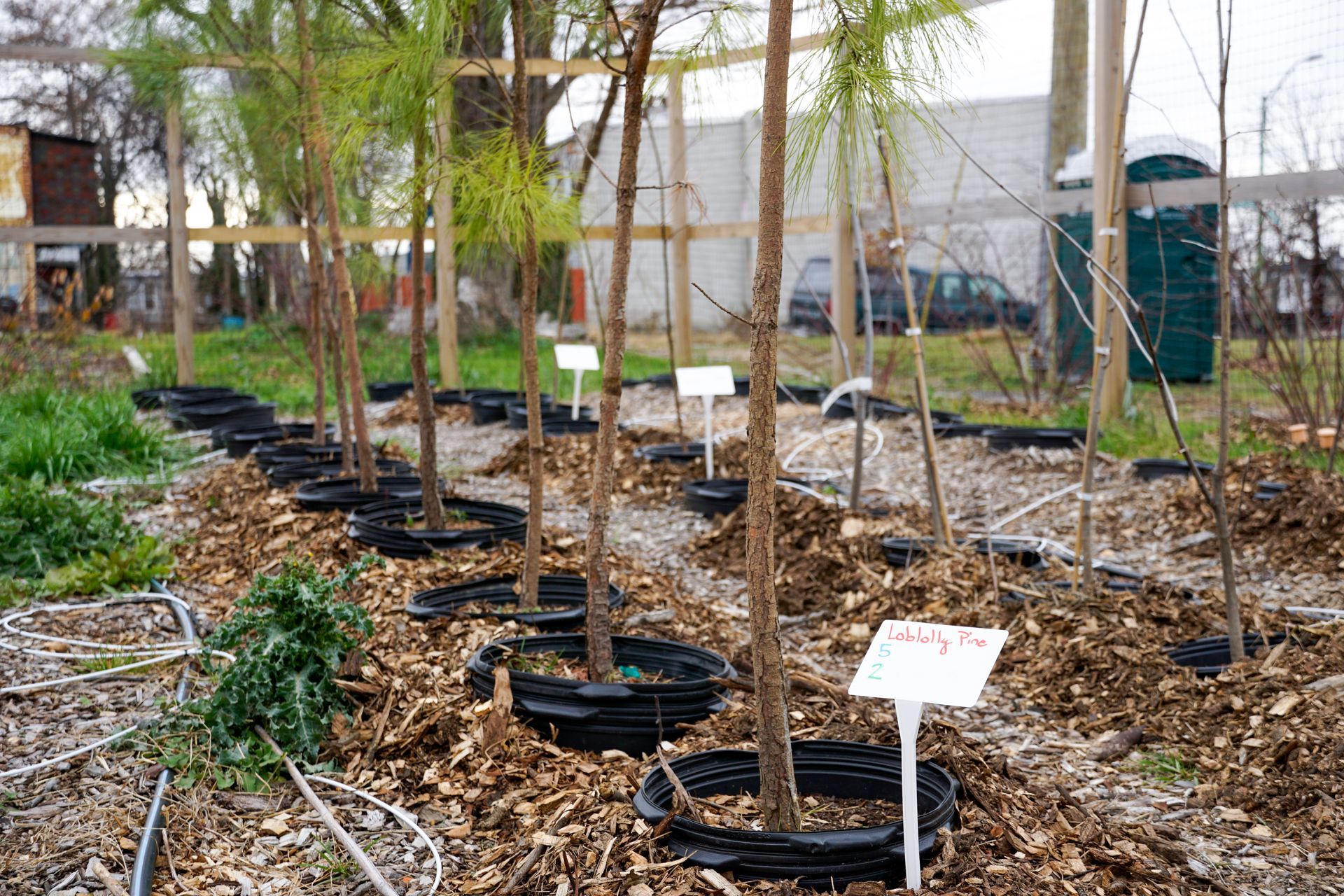EJJI, ToolBank, Install Floating Wetlands Project at Middle Branch Marina
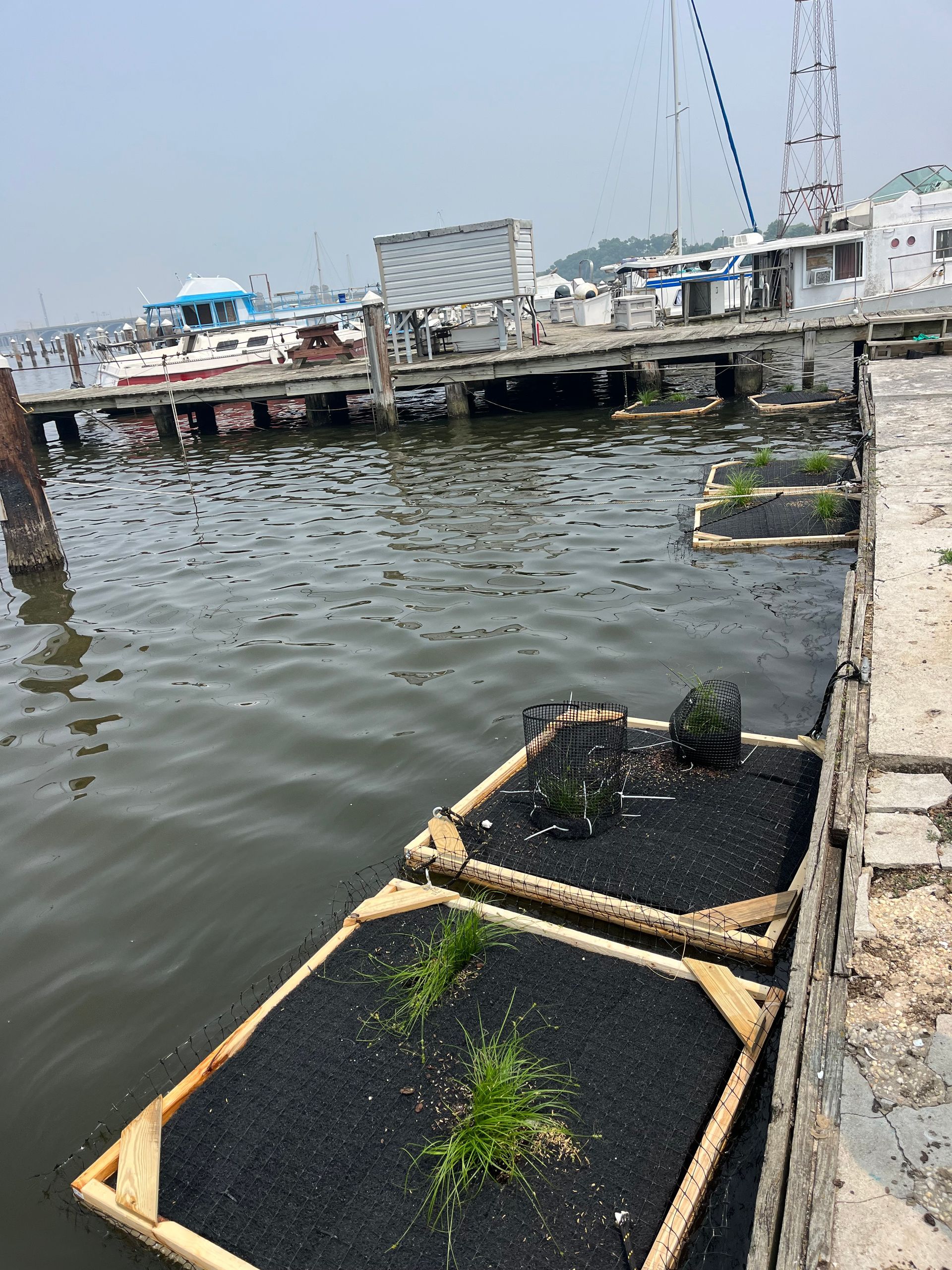
EJJI, ToolBank, Install Floating Wetlands Project at Middle Branch Marina
By Lilly Howard
One of the most important aspects of environmental justice work is access to the water, and being able to provide it to communities that have been cut off from it with highways, sewage plants, and other infrastructure. EJJI is fortunate to have a space at Middle Branch Marina for our science and education work. In addition to it being a beautiful spot, it’s also rich in plankton, fish, and waterfowl. All of that makes it a great spot for floating wetlands.
On June 29, EJJI and Baltimore Community ToolBank inserted eight floating wetlands into the Middlebranch watershed in order to help the ecosystem and water quality. Floating wetlands eat up toxins in the water by creating oxygen and filtering nitrogen and phosphorus that is in runoff. They get switched out every three to five years depending on their health.

The plants in the wetlands are marsh grasses that are selected for their rapid growth. These wetlands are made partly with recycled water bottles used for buoyancy, making the project sustainable.
Middle Branch Marina is just across from Baltimore’s Inner Harbor, where the National Aquarium has been working on floating wetlands for over a decade. The area was filled with wetlands and trees before industrialization; this project is an effort to restore and improve the health of the watershed and is expected to last 30 to 40 years.
Like Baltimore, other cities around the world are researching green infrastructure to improve their water quality and ecological health. For example, in Boston various floating wetlands were installed to help reduce coastal flooding. More locally, at Lockhouse Pond in Havre-de-Grace master watershed stewards worked with floating wetlands to support ecological health.
These wetlands provide habitat for many species, improve water quality, and remove toxins in the community. They are essential for restoring urban environments like Baltimore that are littered with pollutants and prone to algal blooms. With such proximity to the Chesapeake Bay, both Middle Branch Marina and Baltimore’s Inner Harbor are vital locations for floating wetland installments. They will trap pollutants before flowing into the Bay.
This floating wetland is more experimental than the rest as it has netting encompassing the plant to hopefully protect it from birds.
